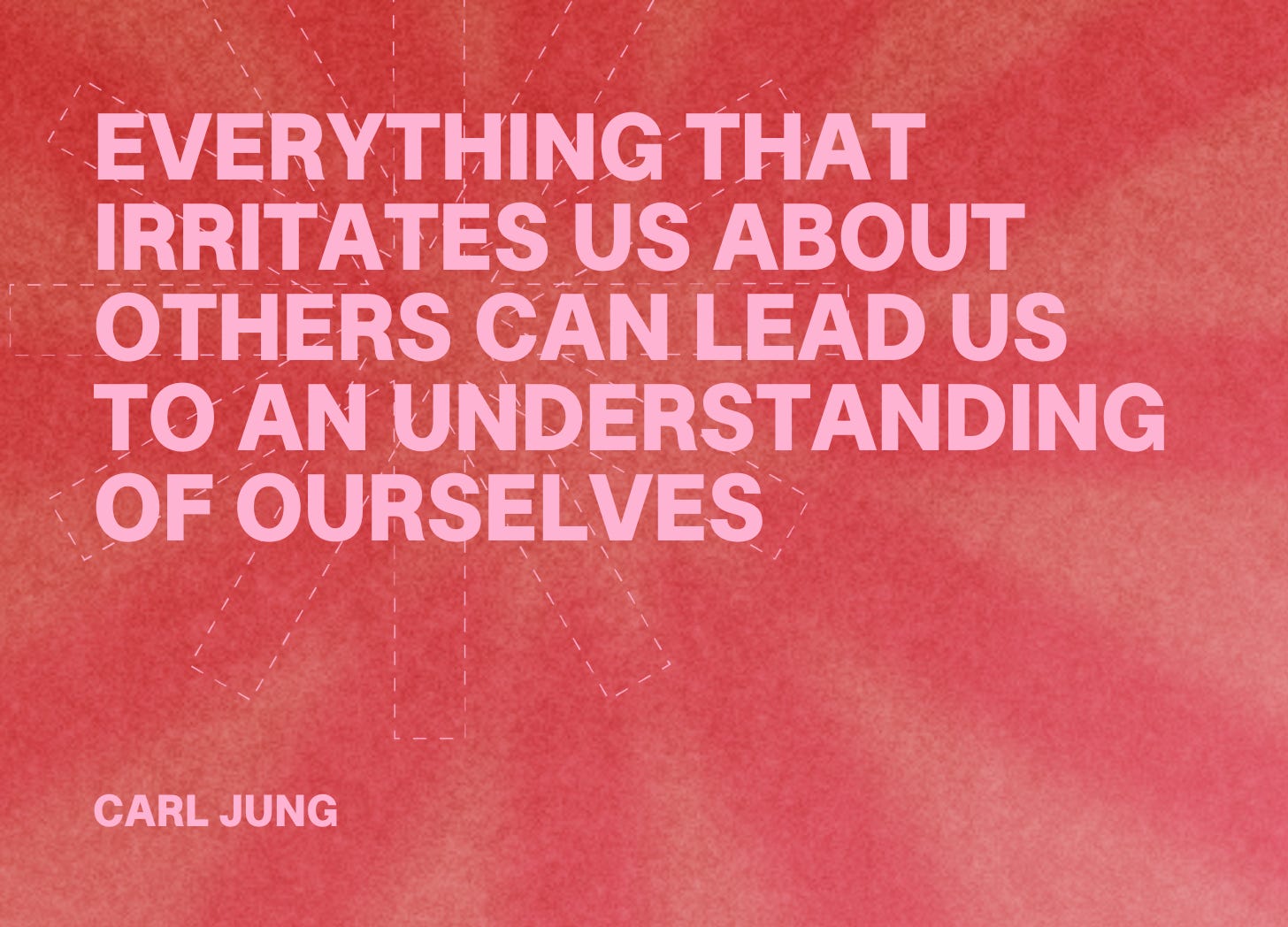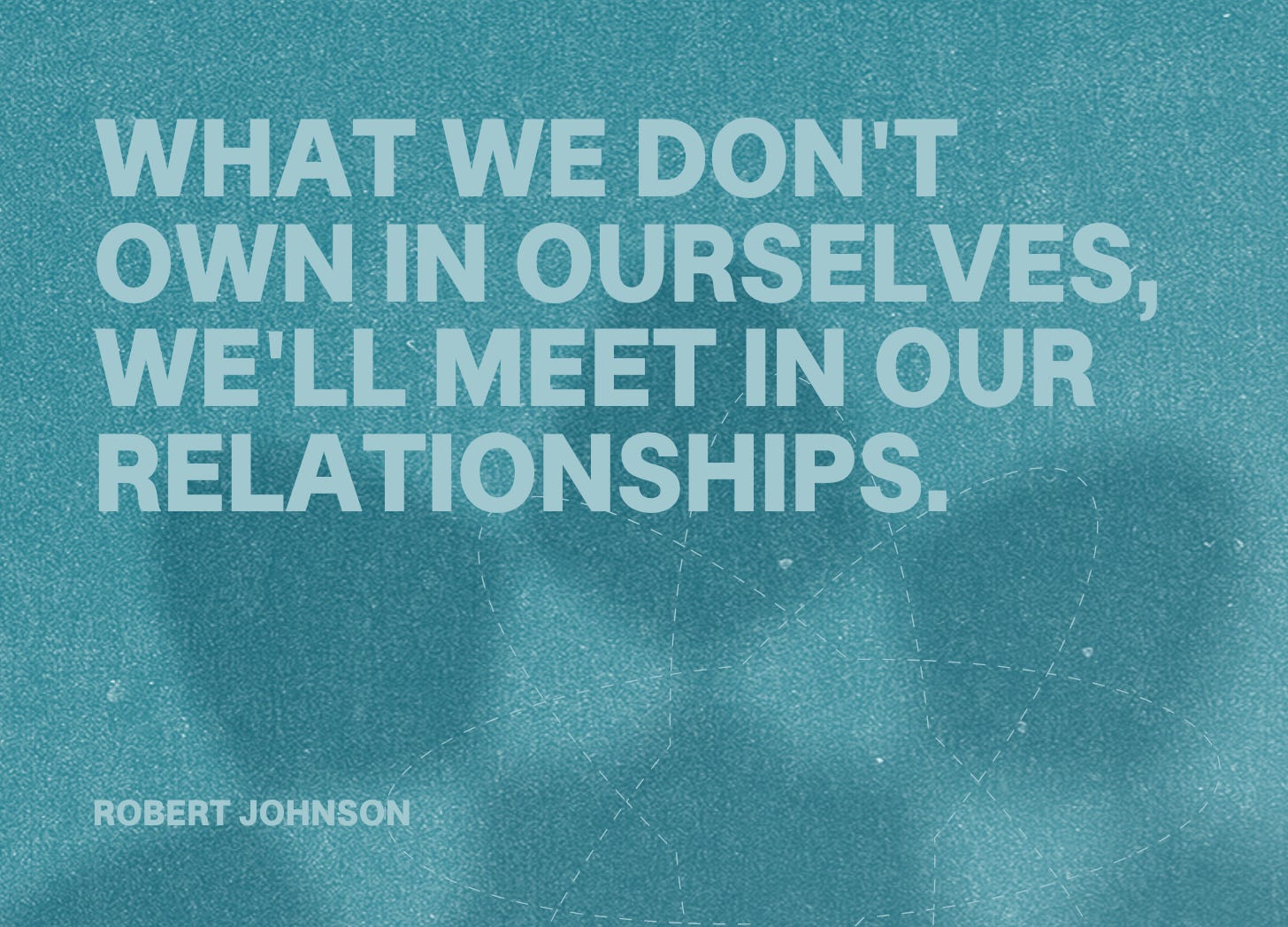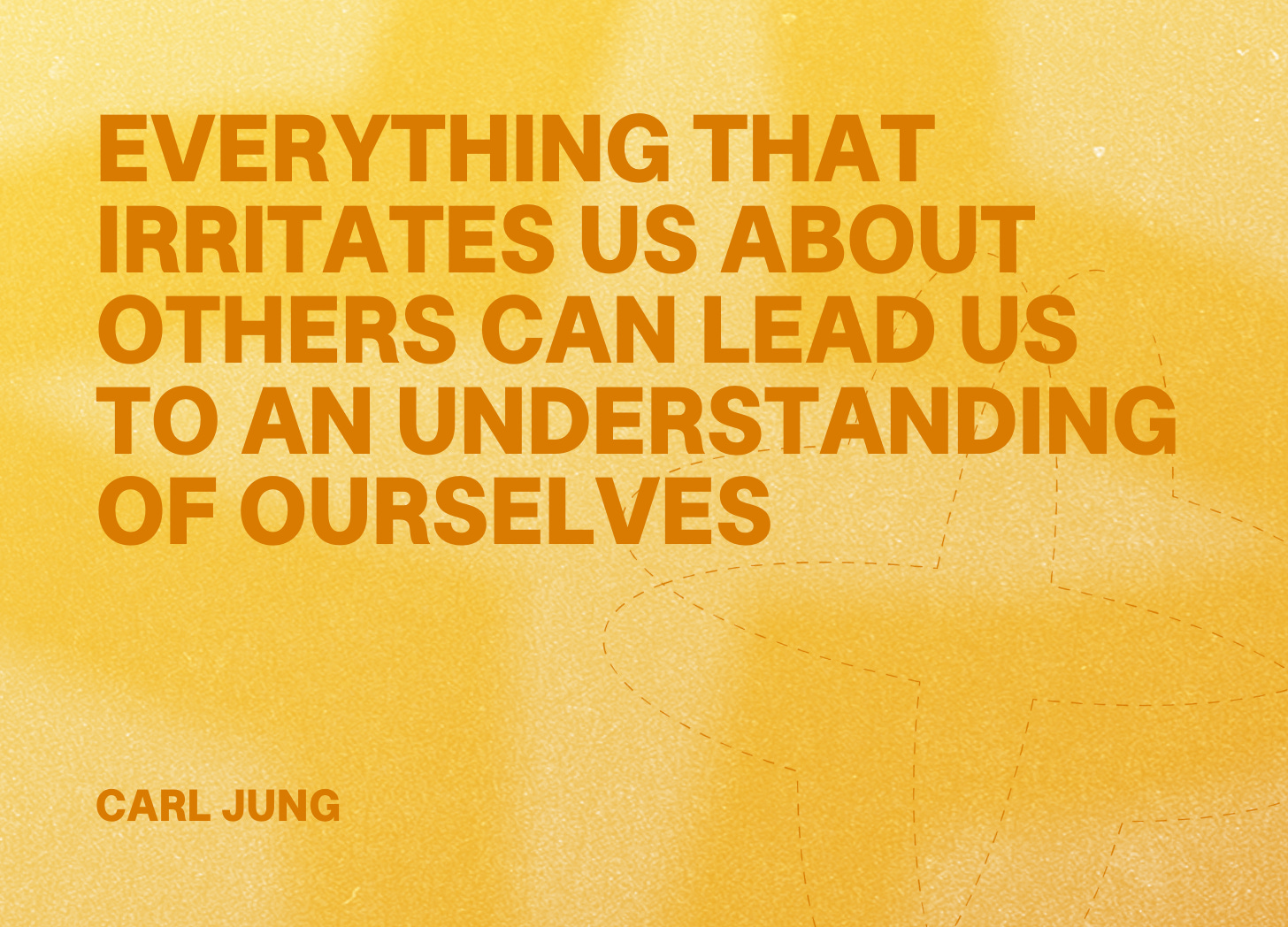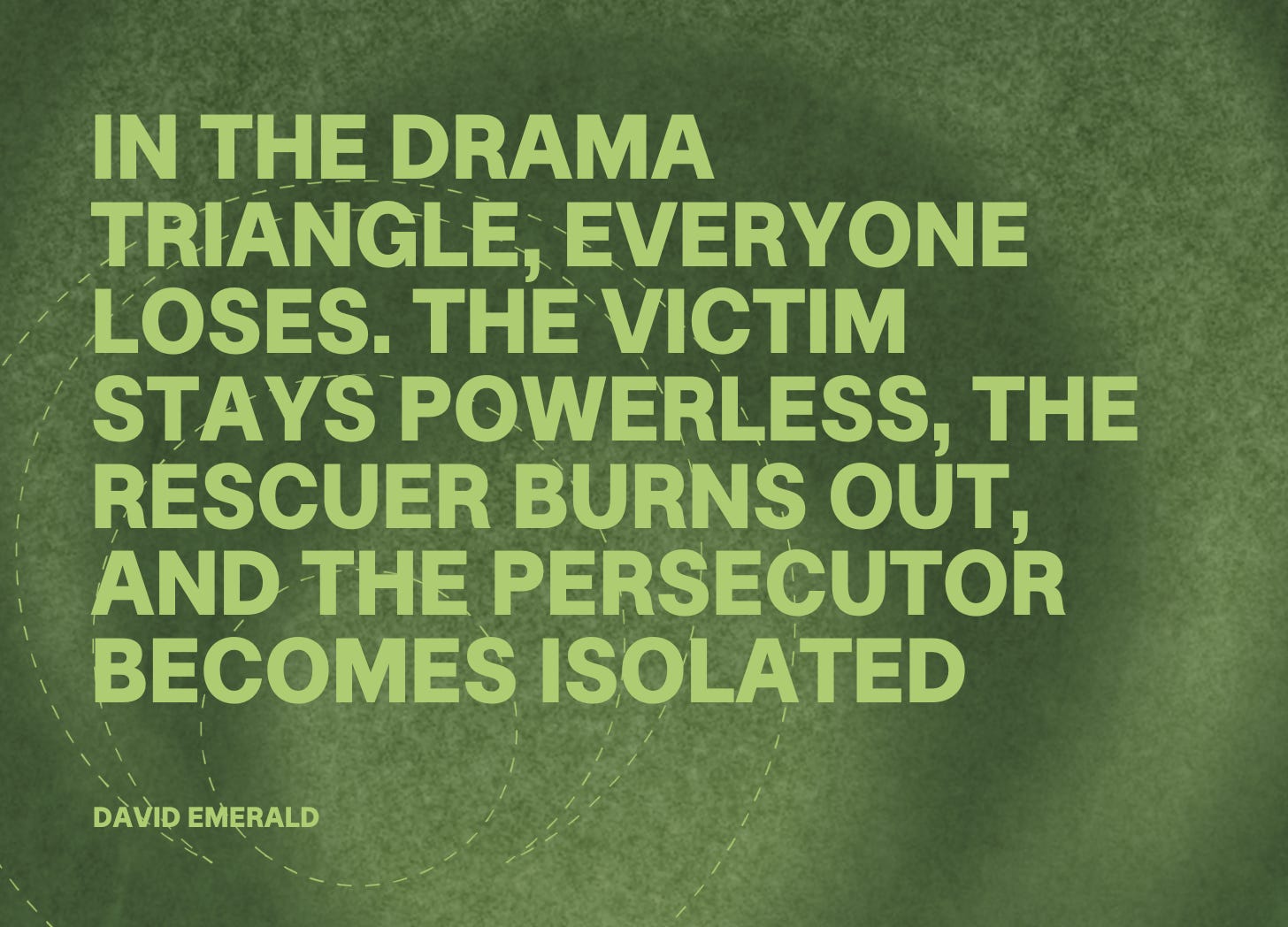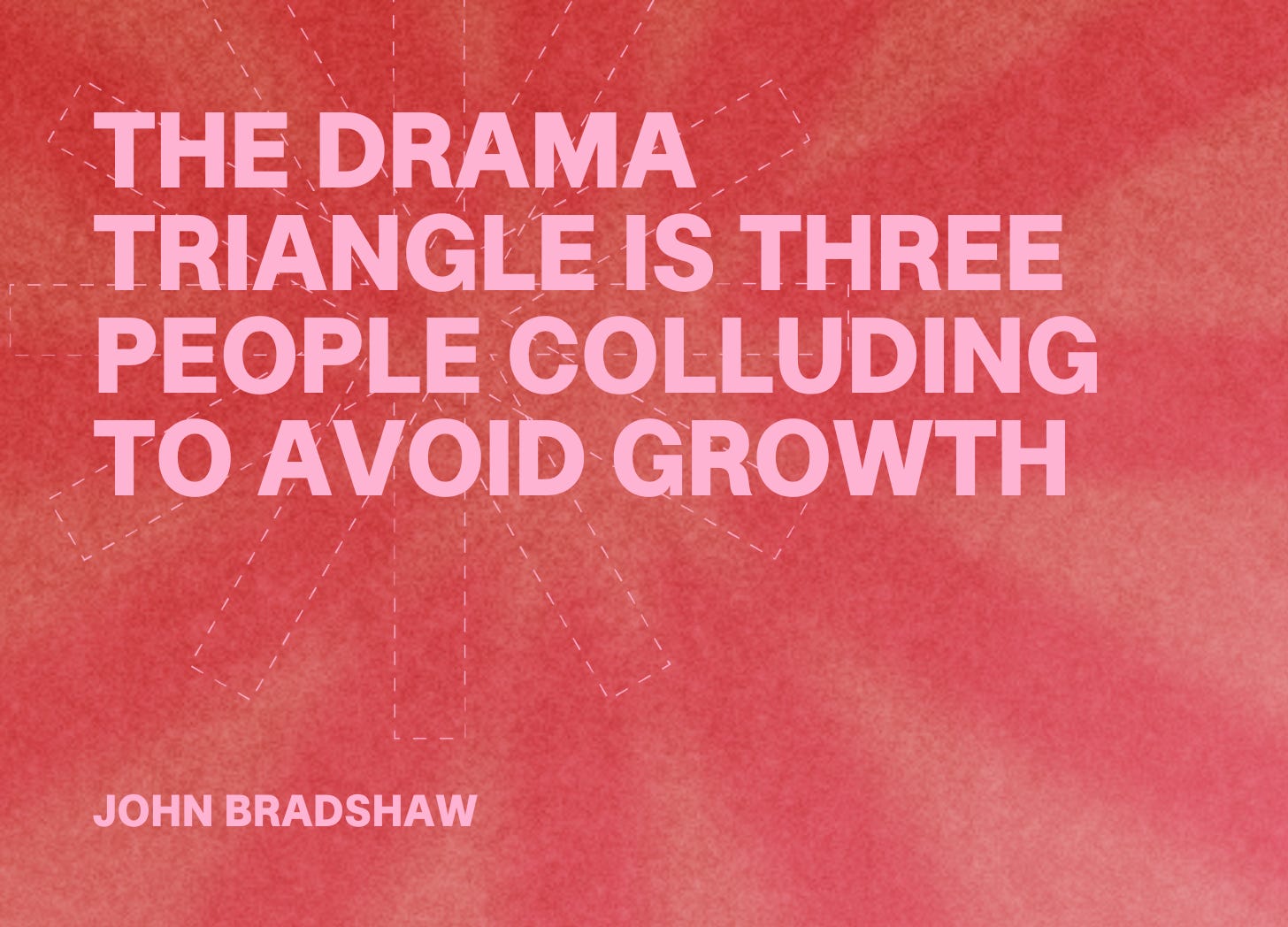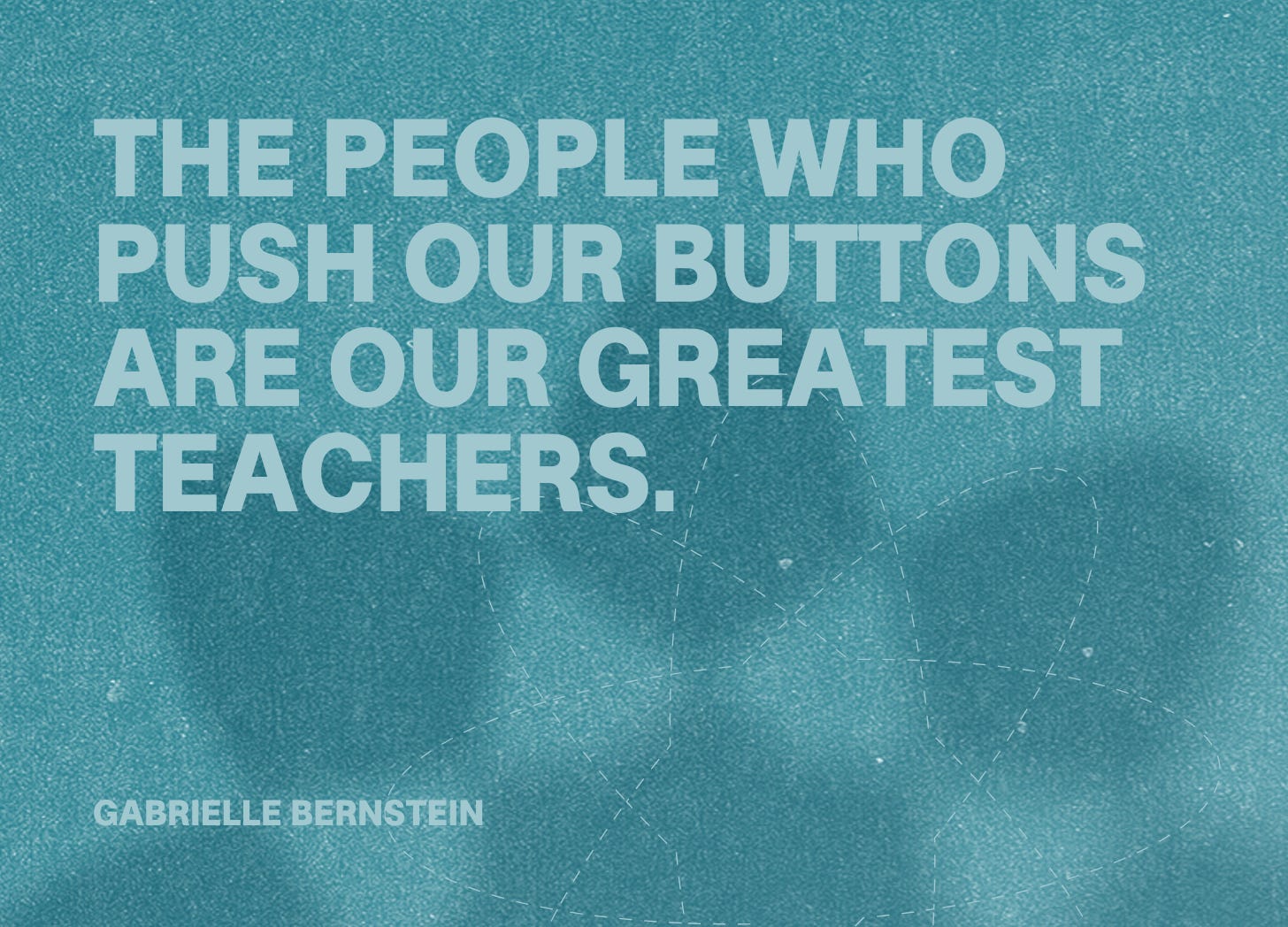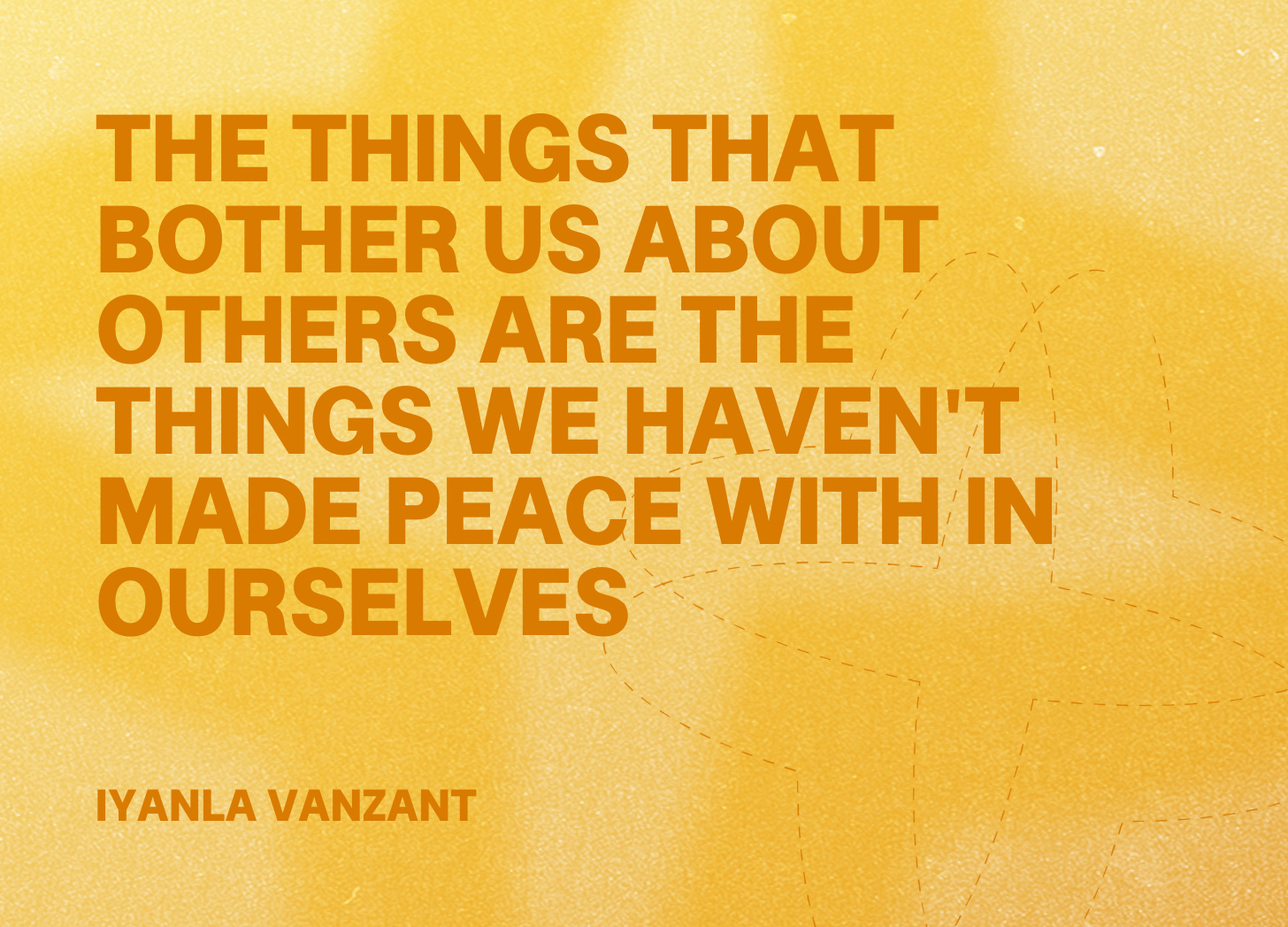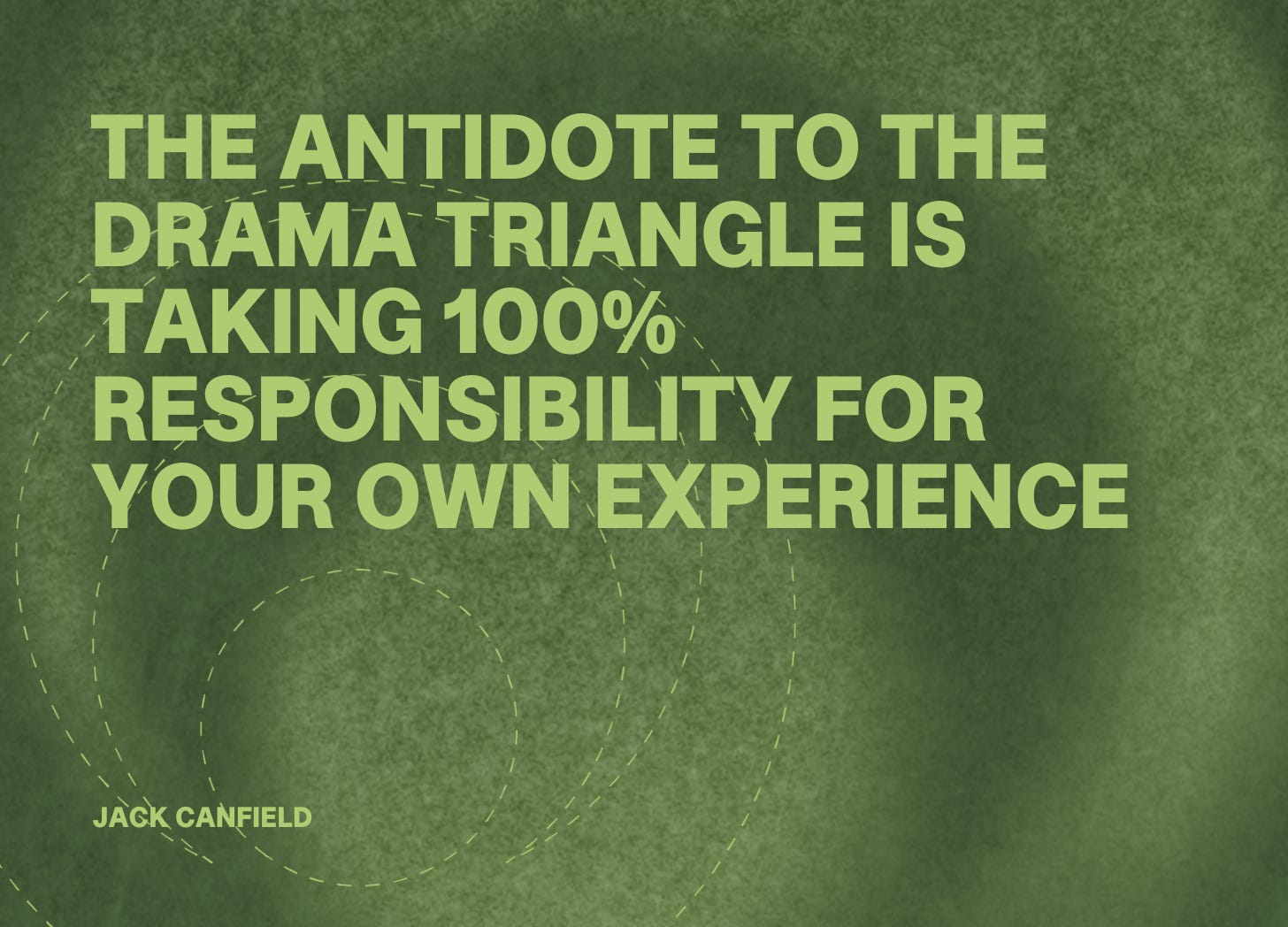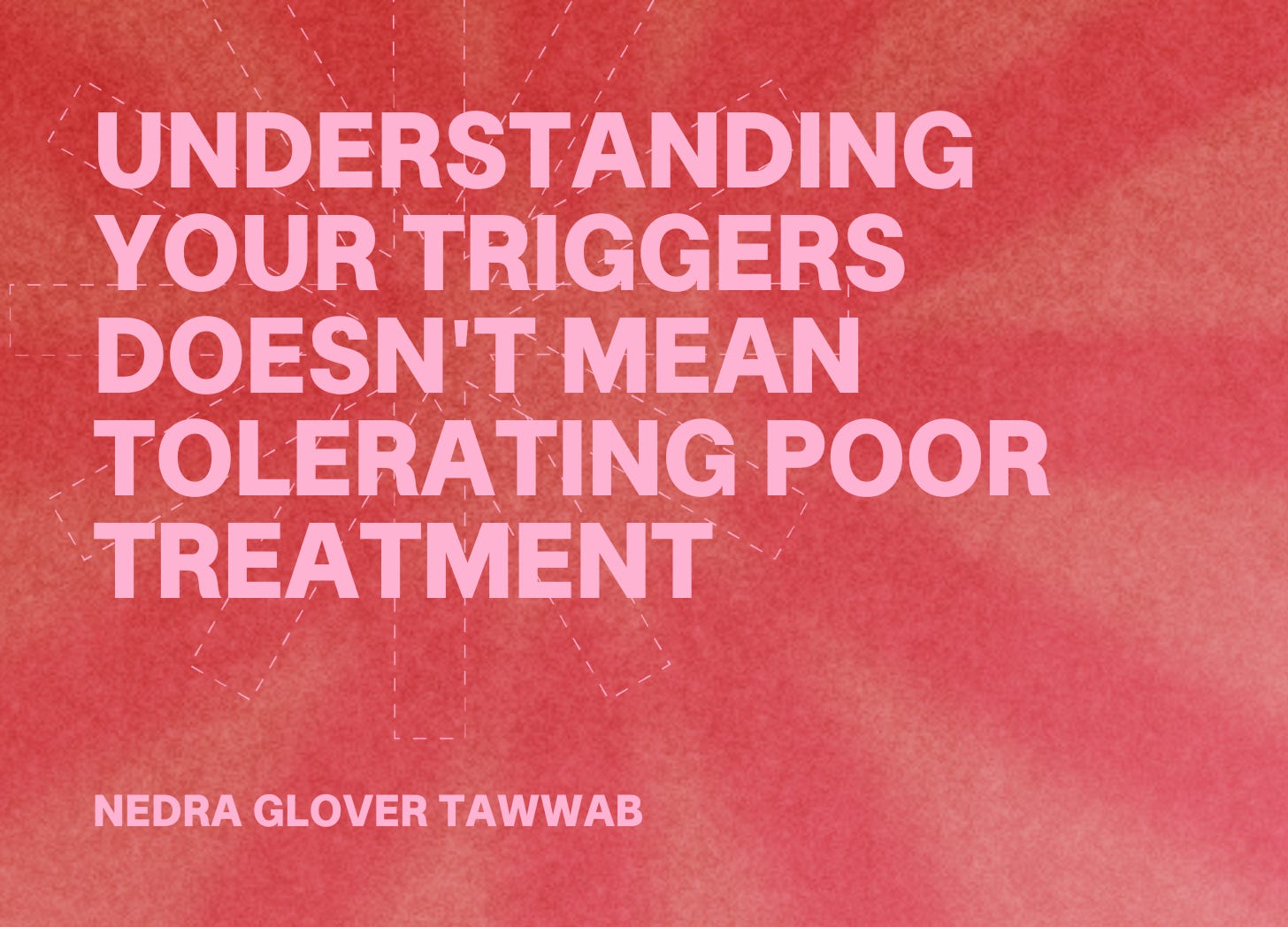Shadow dancing in relationships
Introduction to Shadow Work - Part 9
Thanks for being here. This is the ninth lesson in your free Introduction to Shadow Work course. If you have landed here without reading the previous lessons, I recommend you start from the beginning. Subscribe below, and I’ll send you links to all the lessons in the course.
Rebecca came to therapy after her third relationship in five years ended.
"Why do I keep attracting narcissists?" she asked. "It's like I have a neon sign that says 'users welcome.'"
She thought she was choosing confident, successful, and charismatic men. But as she explored deeper, she realised something uncomfortable: the "confidence" that attracted her had a shadow side of dominance. The "success" was often at others' expense. The "charisma" came with a large serving of manipulation.
Why was she drawn to these qualities?
Rebecca grew up with a passive father and a mother who bulldozed over everyone. She learned that love looked like someone else making all the decisions. She buried her own power, her own voice, her own ability to lead her life.
The very qualities that attracted her in others were the disowned parts of herself.
She wasn't attracting narcissists—she was attracted to people who had the power and decisiveness she'd exiled in herself. Because she'd buried these qualities instead of developing them healthily, she kept choosing people who expressed them destructively.
How your shadow shows up in relationships
Your relationships are mirrors. Every person who triggers, attracts, or repulses you is showing you something about your own shadow.
This happens through projection - the unconscious process of seeing your disowned parts in other people.
Think of projection like a movie projector: The film (your shadow) is inside you, but you see the images playing on the screen (other people). You think the movie is happening "out there," but it's coming from inside the projector.
You project your shadow onto others in three main ways:
1. Negative projection: You see your disowned "negative" qualities in others and judge them harshly.
The person who annoys you for being "too needy" might be showing you your buried vulnerability.
The colleague who triggers you for being "selfish" might be expressing the healthy self-care you've rejected.
The friend who irritates you for being "dramatic" might show you your unexpressed emotions.
2. Positive projection: You see your disowned gifts in others and either idealise them or feel inadequate by comparison.
You're in awe of someone's confidence because you've buried your power
You're jealous of someone's creativity because you've silenced your artistic expression
You're fascinated by someone's freedom because you've caged your spontaneity
3. Romantic projection: You fall in love with someone who embodies your disowned shadow, both the wounded and golden parts.
You're attracted to their emotional availability because you've shut down your feelings.
You're drawn to their rebelliousness because you've been the "good one" your whole life.
You're magnetised by their success because you've been afraid to shine.
Introducing the drama triangle
When projections collide in relationships, we often end up in what's called the Drama Triangle - three unconscious roles that people play when their shadows are activated.
The Drama Triangle has three positions:
The Victim: "Poor me. Life is unfair. I'm powerless."
The part that feels helpless and wronged
Disowns their agency and responsibility
Gets needs met through suffering and complaint
Projects power onto others ("If only you would change...")
The Persecutor: "It's all your fault. You're the problem."
The part that blames and attacks
Disowns their vulnerability and mistakes
Gets needs met through control, manipulation or dominance
Projects fault onto others ("You always..." "You never...")
The Rescuer: "Let me fix this for you. I'll save you."
The part that needs to be needed
Disowns their own needs and problems
Gets needs met through being indispensable
Projects helplessness onto others ("You can't handle this without me")
It’s actually possible to cycle through all three roles in a single conversation.
You start as the victim ("You never listen to me!"), become the persecutor ("You're so selfish!"), then switch to rescuer ("I'm sorry, let me fix this...").
Each role is a way of avoiding your own wholeness - your own power, vulnerability, and responsibility.
Notice where you feel most comfortable:
Do you default to feeling wronged and powerless?
Do you immediately blame and attack when triggered?
Do you jump in to solve everyone else's problems?
Your "home base" in the triangle shows you which parts of yourself you've most disowned.
Your shadow in different relationships
Romantic relationships. Your romantic partner can become the screen for your biggest projections. You fall in love with your disowned shadow, then spend years trying to change them back into who you think they should be.
Common romantic shadow dynamics:
"You're too emotional" (projection from someone who's buried their feelings)
"You're too distant" (projection from someone who's exiled their need for space)
"You're too controlling" (projection from someone who's disowned their own power)
"You don't care enough" (projection from someone who's afraid of their own neediness)
Family relationships. Your family members often trigger your oldest, deepest shadow material because they knew you before you learned to hide parts of yourself.
Common family shadow patterns:
Sibling dynamics where each person gets to express only certain qualities
Parent-child conflicts where each sees their disowned parts in the other
Family roles that become prisons ("the responsible one," "the rebel," "the problem")
Multi-generational patterns where the same shadow themes repeat
Work relationships. Professional settings often activate shadows around power, success, competition, and self-worth.
Common workplace projections:
Authority conflicts that mirror family dynamics
Jealousy of colleagues who embody disowned qualities
Boundary issues that reveal relationship patterns
Competition that masks insecurity about your own worth
How to recognise your relationship patterns
Your relationship patterns reveal your shadow themes. Pay attention to:
Who consistently triggers you?
The people who annoy you most often express disowned parts of yourself.
The qualities you judge harshest are often qualities you've rejected in yourself.
Your "pet peeves" are usually your disowned shadow qualities.
Who do you try to "fix" or rescue?
The people you're compulsively drawn to help often carry the helplessness you won't own.
The problems you're most motivated to solve in others are often your own disowned issues.
Your urge to rescue reveals what you won't let yourself need.
Who do you idealise or put on pedestals?
The people you think are "perfect" often embody your disowned gifts
The qualities you admire most intensely are often potentials you're not allowing yourself
Your heroes show you your own unlived life
What patterns repeat across different relationships?
The same conflicts with different people
The same feelings of being misunderstood, controlled, or disappointed
The exact role you play, regardless of who else is involved
Breaking free from unconscious projection
1. Own your reactions. When someone triggers you, instead of focusing on what's wrong with them, pause and ask: "What is this person showing me about myself?"
This doesn't mean their behaviour is okay - it means your reaction contains information about your shadow.
2. Look for the disowned quality. Identify the specific quality that bothers you, then ask:
"How might I also have this quality?"
"How might I need to develop this quality in a healthy way?"
"What would owning this quality look like for me?"
3. Withdraw the projection. Instead of trying to change the other person, focus on integrating the disowned quality in yourself.
Example: If someone's "selfishness" triggers you, explore how you might need to develop healthy self-care and boundaries instead of expecting them to be less selfish.
4. Take responsibility for your part. In any relationship conflict, ask: "What is my shadow contributing to this dynamic? How am I participating in creating what I'm complaining about?"
Getting out of the drama triangle
To exit the drama triangle, you need to integrate the disowned parts each role represents:
From victim to empowered creator:
Own your power and agency
Take responsibility for your choices and responses
Ask for what you need directly instead of hoping others will guess
Stop waiting for others to change before you can be happy
From persecutor to honest challenger:
Set boundaries without attacking the person
Express anger and frustration without blame
Hold people accountable with compassion
Stand up for what matters to you without making others wrong
From rescuer to supportive coach:
Support others without taking over their problems
Believe in people's ability to handle their own lives
Help without creating dependency
Meet your own needs instead of getting them met through being needed
The body's role in relationship shadows
Your body holds the memory of every relationship pattern. Notice:
How your body responds to different people:
Whose presence makes you feel tense or activated?
With whom do you feel relaxed and authentically yourself?
What physical sensations arise in conflict?
Your nervous system in relationships:
When do you go into fight/flight (argumentative, defensive)?
When do you freeze or shut down (withdraw, go silent)?
When do you feel calm and connected?
Practice feeling your body's wisdom in relationships. Let your nervous system guide you toward people and dynamics that support your wholeness.
Your relationship shadow practice this week
Mirror work: Choose one person who consistently triggers you. Ask yourself:
What specific qualities in them bother me most?
How might I also have these qualities (expressed or suppressed)?
What would it look like to own and integrate these qualities in a healthy way?
What is this person teaching me about myself?
Pattern recognition: Look across your relationships and notice:
What role do I most often play in conflicts (victim, persecutor, rescuer)?
What patterns show up repeatedly with different people?
What am I always trying to change or fix in others?
What do I consistently complain about in relationships?
Projection withdrawal: For one week, when you catch yourself judging someone, pause and ask: "What is this judgment telling me about my own shadow?" Practice curiosity instead of criticism.
Body awareness in relationships: Notice your physical responses to different people this week:
Who makes your body feel tense or activated?
Who helps you feel calm and grounded?
What does your nervous system tell you about different relationships?
A note on boundaries and shadow work
As you do this work, remember: Understanding your projections doesn't mean tolerating harmful behaviour.
You can own your shadow AND maintain healthy boundaries.
You can take responsibility for your reactions AND expect to be treated with respect.
Shadow work enhances boundaries by clearly helping you see what's yours to own and theirs to handle.
When you stop projecting your disowned power onto others, you can set limits from a place of self-respect rather than reactivity.
What your relationship shadows want you to know
If the parts of you that show up in relationships could speak, here's what they might say:
"We're not trying to create drama or chaos in your relationships. We're trying to show you the parts of yourself you've been hiding from. Every person who triggers you offers you a gift - the chance to reclaim something you've lost or never allowed yourself to have. Every conflict is an invitation to become more whole. Your relationships transform when you stop trying to change everyone else and start owning your projections. You stop being a victim of other people's behaviour and become the conscious creator of your connections. The love you've been seeking outside yourself has been inside you all along, waiting to be integrated and expressed."
Your relationships will only be as conscious as your relationship with your own shadow.
In our next and final lesson, we will discuss integration - how to continue this work beyond these ten lessons, when to seek professional support, and how to create a sustainable practice of shadow work that serves your ongoing growth and transformation.
Your relationships aren't happening to you - they're happening through you, offering you endless opportunities to become more fully yourself.
Stay conscious.
P.S. If exploring your relationship patterns brings up big realisations or emotions, be gentle with yourself. Seeing your projections can be humbling and sometimes painful. Remember: this awareness is the beginning of freedom, not something to judge yourself for.


